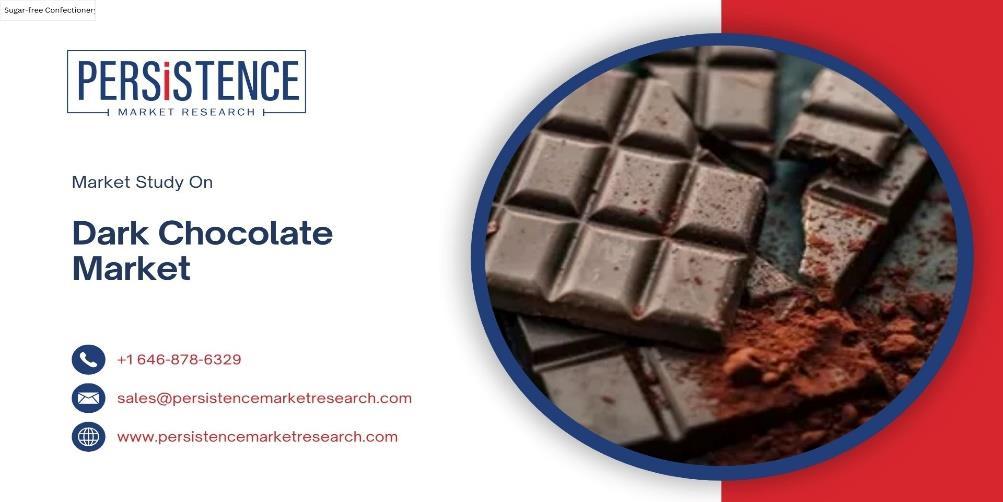Emerging Trends in the $86.2B Dark Chocolate Market:
Segment and Region Disruption

The dark chocolate market is undergoing a remarkable transformation, with growth accelerating across segments and regions. According to Persistence Market Research's projections, the global dark chocolate market size is anticipated to reach a value of US$52.3 billion by 2025 and grow to US$86.2 billion by 2032, experiencing a compound annual growth rate (CAGR) of 7.4% during the period. This surge in market growth highlights the rising global appetite for dark chocolate, spurred by shifting consumer preferences and evolving product innovations.
As the demand for dark chocolate accelerates, we’re seeing significant disruptions within both market segments and regional markets. The dynamics of these disruptions are reshaping the competitive landscape, and companies that want to succeed must stay ahead of emerging trends, anticipate regional differences, and cater to changing consumer preferences. This blog explores the emerging trends within the dark chocolate market, focusing on the segment and regional disruptions driving the $86.2 billion market forecast by 2032.
1. Health and Wellness: The New Frontier for Dark Chocolate
One of the primary drivers of dark chocolate’s global growth is the increasing consumer focus on health and wellness. Dark chocolate, which is often touted for its health benefits such as its antioxidant content, heart-healthy properties, and ability to improve mood is seen as a healthier alternative to milk chocolate and other sugary snacks.
Disruptive Trend:
The rise of health-conscious consumers is disrupting traditional chocolate consumption. People are becoming more mindful of sugar content, artificial additives, and the overall nutritional profile of the foods they consume. This shift has led to the increasing popularity of dark chocolate with high cocoa content (70% or more), which is rich in antioxidants and lower in sugar.
Market Opportunities:
Sugar-Free and Low-Sugar Products: As more consumers follow low-sugar or low-carb diets, such as keto or paleo, there’s a growing demand for sugar-free dark chocolate. Brands that can offer delicious chocolate options without compromising on taste will have a competitive edge.
Functional Ingredients: To cater to health-conscious consumers, some dark chocolate brands are adding functional ingredients like superfoods (e.g., chia seeds, matcha, spirulina) and vitamins to further promote health benefits. These innovations make dark chocolate more appealing as a snack with added nutritional value, capitalizing on the rising demand for functional foods
2. Premiumization: Rising Demand for High-Quality Dark Chocolate
Across many developed markets, there is a clear shift toward premium products, as consumers are willing to spend more on high-quality, luxurious items. Dark chocolate, especially in markets like Europe and North America, is increasingly being seen as a premium indulgence, leading to a surge in demand for artisanal, single-origin, and ethically sourced varieties.
Disruptive Trend:
The demand for premium dark chocolate is being driven by the desire for authenticity and high-quality ingredients. Consumers are looking for rich, complex flavors and are willing to pay a premium for ethically sourced cocoa, environmentally sustainable production methods, and craftsmanship.
Market Opportunities:
Single-Origin Dark Chocolate: Single-origin dark chocolates, which highlight the flavors of cocoa beans grown in specific regions, are becoming increasingly popular. Brands emphasizing the origin of their cocoa beans can appeal to consumers looking for authentic and flavorful chocolate experiences.
Ethically Sourced and Fair Trade: Consumers are more concerned than ever about the ethical implications of their purchases. Brands that focus on fair trade certification and sustainable practices resonate strongly with the premium segment. Companies that can offer transparency in their cocoa sourcing ensuring farmers are paid fairly and that production methods are environmentally sustainable will likely see success in this high-demand segment.
3. Vegan and Dairy-Free Dark Chocolate: Capitalizing on Dietary Preferences
With the growing trend of plant-based eating and increasing awareness of lactose intolerance, the demand for vegan and dairy-free chocolate options is on the rise. While dark chocolate is naturally dairy-free, many brands are launching vegan dark chocolate varieties that cater to specific dietary needs.
Conclusion
The dark chocolate market is booming, and Persistence Market Research projects the global dark chocolate market size will reach US$52.3 billion by 2025 and US$86.2 billion by 2032, experiencing a CAGR of 7.4% from 2025 to 2032. To stay competitive in this growing market, companies must understand the emerging trends disrupting segments and regions.
By leveraging health-conscious product innovations, focusing on premiumization, adapting to regional preferences, and emphasizing sustainability, brands can penetrate new markets and thrive in this evolving landscape. The dark chocolate market’s future looks bright, but only those who can adapt to these disruptions will be able to maximize their market share and satisfy the evolving needs of global consumers.
